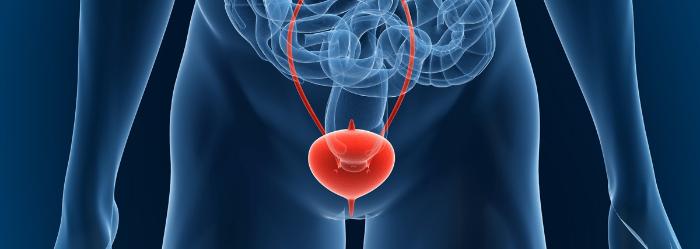Latest News
Prevention & Control
The basics of bladder cancer
May 8, 2014

Did you know that bladder cancer is the fifth most common cancer in the United States? In fact, the American Cancer Society estimates there will be nearly 75,000 new cases of bladder cancer diagnosed this year. In this article, we’re going to discuss the risk factors, symptoms, early detection and treatment of bladder cancer.
Risk factors
Bladder cancer has many known risk factors, including:
- Smoking. Smokers are three times more likely to get bladder cancer than non-smokers.
- Age. Approximately nine out of 10 people with bladder cancer are older than 55.
- Gender. Men are three to four times more likely to get bladder cancer than women.
- Workplace exposures. Certain chemicals increase the risk of bladder cancer. Painters, machinists, printers, hairdressers and workers in factories producing rubber, leather, metal and paper are at greater risk.
- Environmental exposure. Arsenic in drinking water has been linked with an increased risk of bladder cancer.
Symptoms
Often, the first sign of bladder cancer is blood in the urine, also known as hematuria. However, hematuria can also occur in many benign conditions such as urinary tract infections, kidney or ureteral stones, or other benign kidney diseases. It is important to alert your physician if you notice blood in your urine.
Early detection
Although no routine screening tests are available for people who have a high risk of bladder cancer, physicians can analyze a urine sample for blood and use a microscope to look for cancer cells in a patient with abnormal symptoms.
The “gold standard” for early diagnosis of bladder cancer is a cystoscopy. A cystoscopy is a test that allows doctors to look at the inside of the bladder and urethra using a thin, lighted instrument called a cystoscope.
Treatment
The typical treatment for early bladder cancer is transurethral resection, in which a surgeon inserts an instrument through the urethra to remove the tumor. A form of immunotherapy known as Bacillus Calmette-Guérin (BCG) or chemotherapy may also be injected into the urinary bladder following surgery to minimize the risk of recurrence or progression.
More advanced tumors, also known as “muscle invasive” bladder cancer, may require removal of the bladder. The surgeon will create an internal urinary reservoir, a neobladder, with drainage to the abdominal wall or urethra. Sometimes, combined chemotherapy and radiation are given after the surgery in an attempt to preserve the urinary bladder. After treatment, close surveillance with a urologist is vitally important.
To learn more about bladder cancer, visit massey.vcu.edu/cancer/bladder.
About the author
Tzann T. Fang (pronounced “Fong”), M.D., is assistant professor of internal medicine at VCU Massey Cancer Center and the medical director at VCU Community Memorial Hospital (VCU CMH) Cancer and Specialty Care on behalf of Massey. He specializes in medical oncology, hematology and bone marrow transplantation.
Written by: Alaina Schneider
Related News
Research, Center News & Funding, Prevention & Control
Bernard Fuemmeler, Ph.D., honored with Senior Investigator Award from Society of Behavioral MedicineMar 31, 2025
Research, Prevention & Control, Technology
Massey offers new non-surgical robotic focused ultrasound procedure for prostate cancerMar 12, 2025
Community Engagement & Health Equity, Center News & Funding, Prevention & Control
Alliance for Equity in Cancer Care bolsters mission at annual meetingMar 11, 2025

Get access to new, innovative care
Treatments in clinical trials may be more effective or have fewer side effects than the treatments that are currently available. With more than 200 studies for multiple types of cancers and cancer prevention, Massey supports a wide array of clinical trials.

Find a provider
Massey supports hundreds of top cancer specialists serving the needs of our patients. Massey’s medical team provides a wealth of expertise in cancer diagnosis, treatment, prevention and symptom management.
